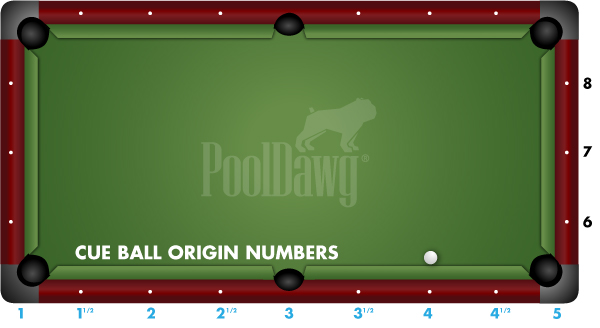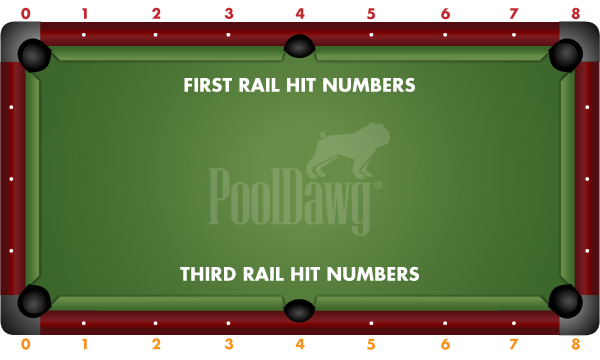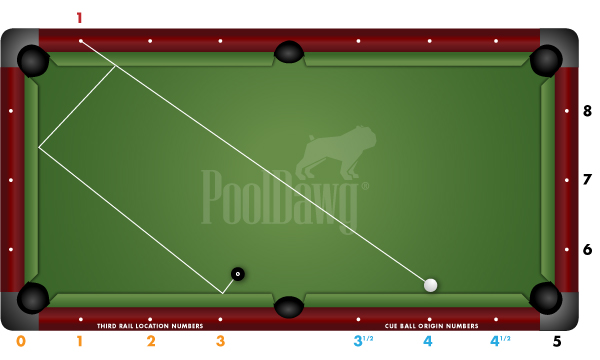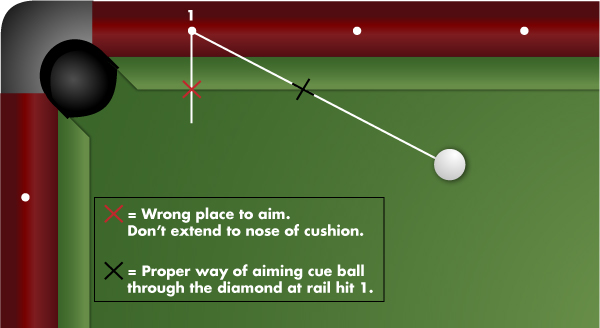Sometimes we find ourselves in an awkward position at the table. Either our opponent has played a good safety, or we have snookered ourselves. No matter how it happened we need to hit the ball!! In this article, I hope to explain a very accurate system for kicking three cushions when the cue ball is near the rail.


This kicking system involves assigning a number for the origin of the cue ball and a number for the position on third rail that you want to hit. Then we will use those numbers to determine the aiming point on the first rail. These numbers are assigned to the table as shown in diagram A.
The Origin of the Cue Ball
The cue ball origin numbers start at the corner pocket closest to the cue ball, and are numbered 5 through 1, decreasing by half at each diamond segment. When the cue ball is near the rail it is easy to determine the origin of the cue ball as it is sitting directly at the origin number (see diagram A, the CB origin is 4).

Determining the First & Third Rail Hit Numbers
In diagram B, you will see a scenario where we would like to kick three cushions to hit the eight ball. The first thing we need to do is determine where our cue ball originates. In this case it is sitting near the rail at origin number 4. The next step is to find out where we wish to hit the third rail. In order to hit the eight ball it seems that the best place to hit the third rail would be at third rail number 3. If we subtract the third rail number (which is 3) from the cue ball origin number (which is 4) we will have discovered the first rail hit number (in this case, 4 - 3 = 1). So if we aim our cue ball through first rail hit number 1 with a tip of top spin and a tip of running side spin (left hand spin in this case) with a medium speed, we will travel to the third rail hit position of 3 and make contact with the eight ball.

Things to Remember:
1. Equipment such as tables and balls can differ. You must test experiment and see what, if any, adjustments must be made for conditions.
2. Shoot through the diamond on the wooden portion of the rail, not through the intersecting point on the nose of the rubber cushion. (see Diagram C)
3. Use one tip of top spin, and one tip of running spin (running spin is the side which the cue ball path is naturally heading. If the cue ball is naturally going to the right, running spin would be right hand spin).
Systems can be a very useful tool. System play does not always mean it will work perfectly, as I said above conditions and equipment can play a large part in how well a system works. Systems do allow you to make educated guesses that allow for easy adjustments to aid in your success.
Join us next time for Part two when we discuss how to use this same system to kick three cushions when the cue ball is not near the rail, but rather out in space in the middle of the table.
Mikey V